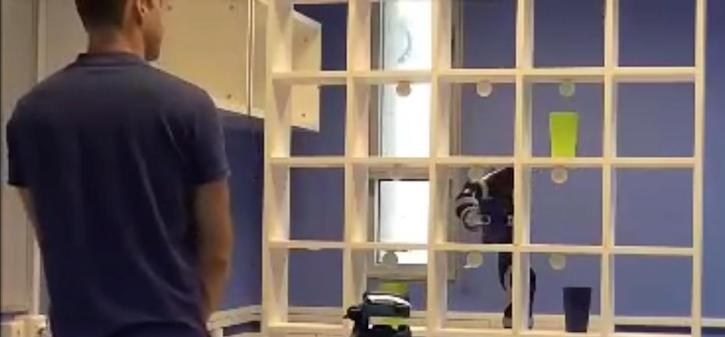If this could be generalized into a protocol then maybe it might be useful, but as is this is useless. No stroke hospital will have access to a robot like this or be able to or want to build a tic-tac-toe grid this large. This assumes a really high functioning hand. Never work for me, my spasticity would prevent opening the hand far enough to grasp a cup and then never be able to let it go. For extra stupidity they used healthy research subjects.
Playing Tic-Tac-Toe with a Robotic Arm Could Aid in Stroke Rehabilitation
Ryan Black
MAY 04, 2018

A combination of robotics and artificial intelligence (AI) proved an effective and particularly novel form of rehabilitation in a recent study out of Israel’s Ben-Gurion University.
Following a major cognitive event like a stroke, it’s key that patients do limb exercises that replicate daily tasks in order to regain physical competence. Simple actions like drinking from a cup are often used as an element in rehabilitation.
Gamification can also be useful for getting people to do a task without having to focus too hard on it. In their new study, the team from Ben-Gurion decided to combine concepts and have patients play a game of tic-tac-toe that required them to grip and place cups on square shelves.
READ: How Personalized Interactions with Robots Could Help Stroke Victims
And their opponent was a robot.
The patient stood on one side of a grid of open square shelves, placing colored plastic to claim spaces on the board. The other player was a specially-developed algorithm designed to adapt to the player’s moves. It could play either as a series of lights fixed to the shelves that would light up to claim their spaces, or as a physical robotic arm that would also place cups on the “board.”
To test engagement with the system, the research team recruited 62 healthy individuals—all right-handed—who were either younger than 30 or older than 60. At first, both groups overwhelmingly preferred playing against the robotic arm because they enjoyed the novelty. When asked to play 2 more games, they preferred to play against the robot. But given the option to play 10 more games against either the arm or the light system, the younger group wanted to play against the lights, while the older group still preferred playing against the robotic arm.
"Some of the young adults complained that the robot moved too slowly; therefore, they preferred the quicker system when asked to play many more games," researcher Shelly Levy-Tzedek, head of the Cognition, Aging, and Rehabilitation Lab in Ben-Gurion University's Department of Physical Therapy, said. "That indicates a need to personalize the speed of the robot to each participant."
Silly as it may sound, the work isn’t arbitrary: The Ben-Gurion scientists wanted to gauge how people interacted with robotic devices in rehabilitation scenarios. This exercise fits into a larger ecosystem of robotic gamification studies that Levy-Tzerdek and her team have conducted.
In October, they published another study of how robots could be used to help rehabilitate patients following stroke. That work involved patients playing a “mirror game” with humanoid robots where they had to mimic one another’s movements. Again, in that situation, they found that people enjoyed the exercise and that it allowed for personalization in treatment.
“I think of it as a robotic revolution in rehabilitation,” Levy-Tzedek said. “The goal is to have a rehabilitation protocol that includes the robot as a partner and as a coach so that people can do their exercises at home.”
No comments:
Post a Comment